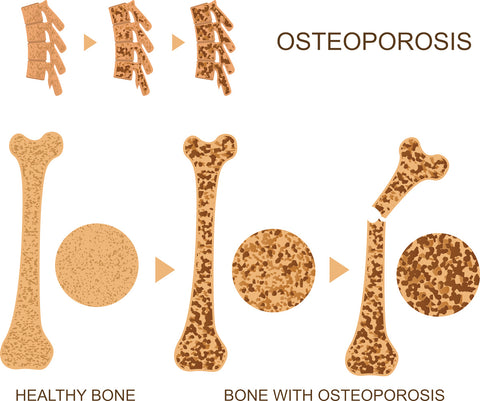In older adults, weightlifting and strength training have incredible benefits for staying healthy but can be intimidating to those just beginning. The good news is you don’t have to bench press a Buick to get those benefits. In this article, we'll explore some of the benefits of strength training for older adults so you can start your weightlifting journey and get healthy now!
Contrary to popular belief, strength training is not just for bodybuilders or athletes. In fact, it has a host of benefits for older adults as well. Generally speaking, as individuals get older, they engage in fewer and fewer weight-lifting exercises. This can be for a number of reasons ranging from less concern for appearance, fear of injury, feeling incapable, lack of understanding of what to do, or existing pain. But weight lifting is crucial for healthy aging and the prevention of problems; it’s not just an activity to be able to flex your muscles in front of the mirror. In fact, lifting weights is arguably even more important for older individuals than for younger ones, as muscles tend to weaken with age, which can lead to a decrease in physical abilities.
Related Roduct: Active Protein
Reasons Weightlifting is Vital for Older Adults

It makes sense for all people over the age of 50 to engage in weight training. In fact, one study looking at nursing home residents found that after only eight weeks of weight lifting, participants increased their muscle strength significantly1. Additional muscle mass goes a long way in helping with balance, speed, coordination, strength, and endurance in daily activities.
Reduced Risk of Chronic Disease
Strength training has been linked to a reduced risk of chronic diseases such as heart disease, diabetes, and arthritis2. This is because it can help to improve cardiovascular health, regulate blood sugar levels, and reduce inflammation in the body.
Related Product: Beauty Greens Collagen Booster
Decrease Fall Risk
One major benefit of weight lifting, especially for elderly individuals, is the ability to improve walking. As individuals get older, having the strength to walk, especially long distances, go up and down stairs, and/or walk without assistance becomes increasingly challenging. Having insufficient leg strength not only leads to difficulty walking but also an increased likelihood of falls or accidents.
Improve Bone Density

Weight lifting helps maintain (or improve) bone health. As we age, the bones tend to weaken and become more brittle. While there’s obviously a nutritional component to this as well, one key way of preventing bone weakness and loss is weight lifting. Strength training has been shown to increase bone density, which can help to reduce the risk of osteoporosis and fractures. This is especially important for women, who are more likely to develop osteoporosis than men. Weight-bearing exercise increases bone mass, helping prevent osteoporosis. Having stronger bones helps prevent broken or fractured bones. Another way to strengthen bones would be with sufficient Magnesium and calcium like you get with Sunwarrior’s Magnesium supplement.
Sharpen Mental Health
Strength training has also been shown to have a positive effect on mental health. It can help to reduce symptoms of anxiety and depression, improve mood, and boost self-esteem. This is because physical exercise like strength training releases endorphins, which are natural mood boosters.
Increase Independence

Strength training can help older adults to maintain their independence for longer. By improving physical function, balance, and mobility, it can make it easier to perform daily tasks such as getting up from a chair, carrying groceries, and climbing stairs.
Social Benefits
Strength training can also provide social benefits for older adults. It can be a great way to meet new people and make friends, especially if you join a group exercise class or gym. This can help to combat feelings of loneliness and isolation, which can be common in older adults.
Reduce Arthritic Pain
An additional benefit weight lifting provides older individuals is its ability to help prevent or lessen the pain of arthritis by strengthening joints. Weight lifting strengthens not only the muscles and bones but also the tendons and ligaments around the joints. This can lead to reduced pain as the tissues around the joint are stronger, which eases stress off the joint. It also helps improve the range of motion.
Manage Weight
And, as many of us are acutely aware, losing fat weight becomes increasingly more difficult as we age. Weight lifting helps to boost the metabolism and burn fat, maintaining or improving body composition, helping the body stay firm, toned, and tight.
Related Product: Lean Superfood Shake
Helps Maintains Healthy Blood Sugar
A less obvious benefit of weightlifting for older adults is the maintenance of healthy blood sugar levels. Especially with age, cells tend to become less sensitive to insulin, and diabetes can result. Weight lifting helps improve glucose control by using glucose for energy during and after the lifting session.
Some other key benefits of weightlifting for older individuals includes:
- Reduces resting blood pressure
- Improves blood lipid profiles
- Boosts cardiovascular health and endurance
- Improves flexibility
- Increases serotonin (the “feel good” hormone)
Begin strength training for your health now!
Before beginning any exercise program, it's always a good idea to talk to your doctor to make sure you're healthy enough for physical activity. Here are some tips for getting started with strength training as an older adult:
Join a Gym or Fitness Class

Joining a gym or fitness class can be a great way to get started with strength training. Many gyms offer senior-friendly classes or personal training programs that are specifically designed for older adults. This can help you learn proper form, stay motivated, and meet other like-minded individuals.
Start with Bodyweight Exercises
Bodyweight exercises are a great way to get started with strength training. These exercises use your own body weight as resistance and can help to build strength without the need for equipment. Examples of bodyweight exercises include squats, lunges, push-ups, and planks.
Use Light Weights or Resistance Bands
If you're ready to progress to using weights or resistance bands, start with light weights or resistance bands. This will help you to build strength gradually and reduce the risk of injury. You can gradually increase the weight or resistance as you become stronger.
Focus on Form and Technique
When performing strength exercises, it's important to focus on form and technique. This will help you to get the most benefit from the exercise and reduce the risk of injury. If you're not sure how to perform an exercise correctly, consider working with a qualified fitness professional.
Start with One or Two Exercises Per Muscle Group
When getting started with strength training, it's best to start with one or two exercises per muscle group. For example, you might start with squats and lunges for your legs, push-ups, and chest presses for your chest, and bicep curls and tricep extensions for your arms.
Listen to Your Body
It's important to listen to your body when strength training. If you experience pain or discomfort, stop the exercise immediately and consult with a fitness professional or doctor. It's also important to give your body time to rest and recover between workouts. Overtraining can lead to injury and may actually hinder your progress.
Allow for Rest and Recovery
It's important to allow for rest and recovery between strength training sessions. This will help your muscles to repair and grow stronger. Aim to strength train two to three times per week, with at least one day of rest between sessions.
Related Product: Warrior Blend Protein Plus Greens
Getting started with strength training as an older adult can be a great way to improve physical function, reduce the risk of chronic disease, and improve the overall quality of life. Start slowly and progress gradually, focusing on form and technique. And always remember to talk to your doctor before beginning any exercise program.
It’s clear to see that weightlifting is important for everyone, and that also holds true for older individuals. While the exact exercise prescription should be individualized, making sure to engage in some weight training each week is important for every body.









